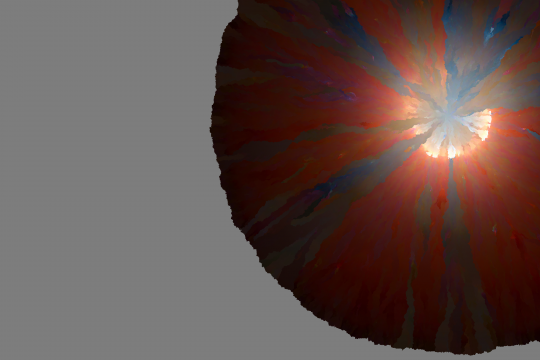Work
#407 Eindruck Artwork SeriesWhen looking at photos today, the question is less 'what do I see?' and more 'what am I supposed to see?'. Photographs have lost their credibility and documentary properties, mostly being staged and, now even generated through generative AI: what we see has never happened. Photographs are deliberately used to impress, influence, and guide the viewer.
In the German language, we speak of 'wahrnehmen' an image. The term emphasizes that the impression evoked by the photo is literally considered true, which is 'wahr'.
Even if we are aware that a published photo of a politician during an election campaign or a post from an influencer is staged, the act of storing the image happens in the same way as it does for a snapshot at the last birthday with friends.
Even if the word 'fake' is written all over an image, perception and memory detach from this information. All photos, whether 'natural', staged, or generated, end up equally in our memory image storage. All can resurface in dreams, during contemplation, or when looking at similar photos. Without the additional information 'fake'.
We are helplessly exposed to the impressions induced by photos.
The 'Eindruck' art series draws attention to this fact and opposes it with 'slow seeing'.
The 'Eindruck' series removes the staging from the images. It doesn't overwhelm the viewer with impressions. It demands and allows 'slow seeing': without being exposed to the danger of influence, the viewer needs their slow thinking to approach the representation, the depicted. The work invite a second look, and reflection.
Each work in the 'Eindruck' series is based on a photograph. With randomness and algorithms, the pixels of the original image are rearranged. One pixel at a time. Starting at a randomly chosen position in the image, a random pixel is placed. In the next step, a neighboring position of this starting pixel is randomly selected. On this position, the next pixel is placed. This becomes the reference pixel, and the process repeats until the pixels fill the image again.
There are two modes: one develops circularly from the starting pixel to the edges filling the image as once. The other distinguishes between the silhouette of a person and the background, painting in the style of a brush.
The development of an 'Eindruck' questions the significance of the first impression – when derived from a photograph. Because getting to know, recognizing a person and a situation requires more than just a quick glance. Time. Patience. Interest. Openness. An ever-new slow seeing.
By Christin Schäfer
GermanyLinked to Project
 2
2Discussion

No discussion to show







